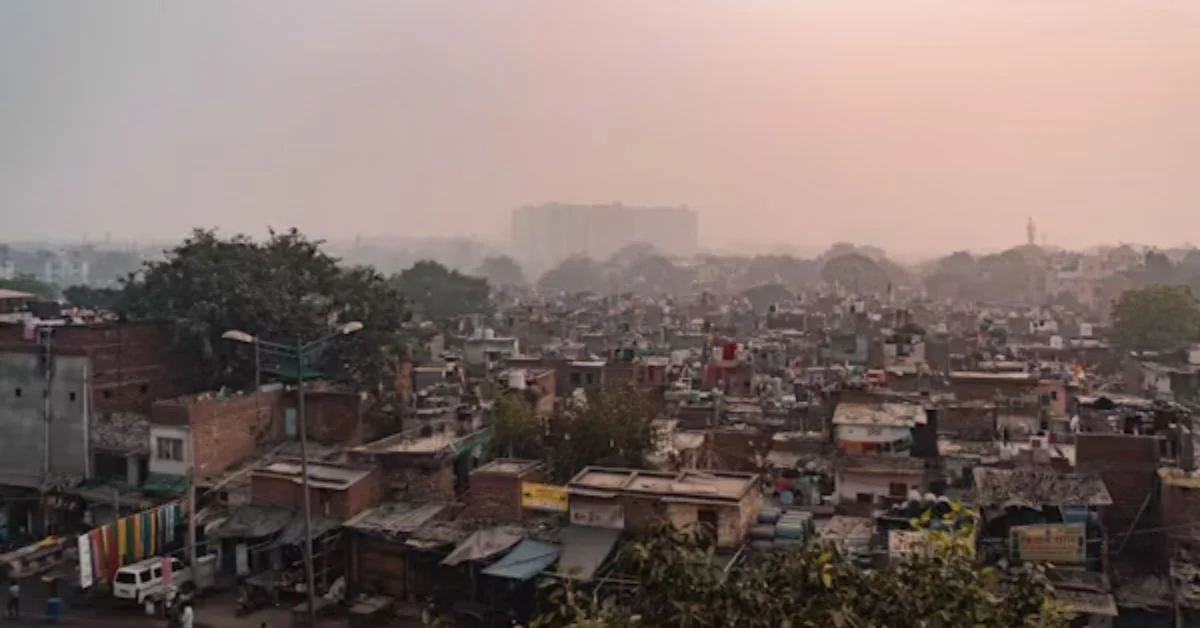For many Delhiites, the name “Madipur JJ Colony” may spark a mix of familiarity and uncertainty. Often mentioned in municipal reports and local news but rarely understood beyond its postcode, Madipur JJ Colony is one of the countless urban resettlement colonies that define the invisible spine of India’s capital. It’s not a tourist attraction, nor a high-rise suburb. Instead, it is an urban microcosm—a patchwork of working-class life, resilience, struggles with housing rights, civic battles, and a deep sense of community.
If you’re searching for an informed, real-world perspective on what Madipur JJ Colony is, how it functions, and what it represents in the larger context of Delhi’s urban planning, this article offers a deep, fact-based look—written in a tone reminiscent of The New York Times’ human-centered journalism.
Madipur JJ Colony is more than a location—it’s a living story of how India’s cities grow, adapt, and often leave some behind.
1. Introduction: Why Madipur JJ Colony Matters
Madipur JJ Colony is a settlement located in West Delhi, adjacent to the more established Madipur village and close to the Madipur metro station. Though it may appear like just another dense locality in the capital, it represents something far more critical: the urban survival story of Delhi’s laboring classes.
This is a space built—quite literally—by hands that constructed the city: daily wage laborers, domestic workers, rickshaw pullers, small vendors, and factory hands. Today, Madipur JJ Colony is a symbol of both resilience and neglect, ambition and exclusion.
In a nation grappling with urban expansion, how we treat our JJ colonies speaks volumes about our democratic commitments to housing, dignity, and inclusion.
2. What Is a JJ Colony? Understanding the Context
“JJ” stands for Jhuggi-Jhopri, a term used to describe informal or unauthorized slum-like settlements in Indian cities. A JJ Colony is usually either:
- A slum area where residents live in makeshift or semi-permanent homes
- A resettlement colony where previous slum dwellers were relocated
Madipur JJ Colony is primarily a resettlement area, meaning its current population once lived in unauthorized clusters elsewhere and was moved to this site—often with limited planning, temporary documentation, and unfinished infrastructure.
These colonies serve a vital function in India’s urban ecosystem: they absorb the migrant working population, provide cheap housing, and support urban industries through human capital. Yet, they remain under-recognized in official city planning.
3. The Origin of Madipur JJ Colony
Madipur JJ Colony began to expand significantly in the late 1990s and early 2000s, as part of Delhi’s push to “clean up” visible slum areas in more central zones. Families were relocated here, often with little more than a ration card, a voter ID, and an allotment slip.
Initially, the area lacked paved roads, water lines, sewage systems, or any clear demarcation of land. Residents built their own homes—brick by brick, often with borrowed money and community labor. Over time, what started as a cluster of tin roofs evolved into a dense residential quarter with over 20,000 inhabitants today.
4. Geography and Infrastructure Overview
Madipur JJ Colony lies within reach of Rohtak Road and the Delhi Metro’s Green Line, which connects it to areas like Inderlok and Mundka.
The colony consists of:
- Narrow lanes, many too tight for cars
- Rows of houses, most with ground +1 or +2 levels
- Commercial establishments like kiryana stores, mobile repair shops, tea stalls
- Religious spaces including temples and small shrines
- An adjoining garbage dump that locals have long protested
Electricity is widely available, though often with illegal connections or overloaded circuits. Drainage remains inadequate, with many lanes flooded during monsoon.
5. Life in Madipur: A Day in the Colony
Morning
Men leave early—some for nearby construction sites, others for markets. Women may work as domestic help in neighboring areas like Paschim Vihar.
Noon
Small vendors open stalls—selling vegetables, mobile accessories, tea. Children return from school (if enrolled).
Evening
The narrow lanes fill with the sound of local TV serials, calls for chai, and the clinking of utensils.
Despite overcrowding, the community is close-knit. Residents know each other by name, share meals, and pool money for emergencies.
6. Housing, Property Rights, and Legal Complexity
One of the most complicated aspects of Madipur JJ Colony is tenure security.
Most homes have:
- No formal ownership papers
- Only ration cards, voter IDs, or electricity bills as proof
- Unregistered sale agreements if property changes hands
This creates a fragile housing system—people invest heavily in building homes they technically don’t own. It also leaves them vulnerable to eviction or demolition, especially during civic projects or legal disputes.
Efforts to regularize ownership have stalled repeatedly, caught in bureaucratic and political limbo.
7. Water, Sanitation, and Public Services
Water remains a pressing issue. There is:
- No continuous piped supply; most residents rely on water tankers
- Groundwater is often unsafe or saline
- Shared community taps function only for a few hours a day
Sanitation is improving slowly, with some public toilets built under Swachh Bharat Mission, but maintenance is erratic. Many families have built in-house toilets, often with narrow soak pits due to lack of sewage connections.
Garbage collection is inconsistent, leading to piles of waste in corners and open plots.
8. Schools, Clinics, and Education Access
Madipur JJ Colony has access to a few government primary and secondary schools within 2 km. However:
- Dropout rates among adolescents remain high
- Many children work part-time to support families
- Coaching centers offer limited after-school support
- Healthcare is largely informal, with local “clinics” run by unlicensed practitioners
For serious conditions, residents travel to Deen Dayal Upadhyay Hospital or Baba Saheb Ambedkar Hospital, both over 30 minutes away.
9. Transportation and Connectivity
Madipur’s biggest advantage is its connectivity:
- Madipur Metro Station on the Green Line
- DTC buses via Rohtak Road
- Shared autos and cycle rickshaws for last-mile access
Yet internal mobility is limited. Ambulances often can’t enter narrow lanes, and in emergencies, patients are carried out by hand.
10. Women, Work, and Informal Economies
Women are the invisible workforce of Madipur JJ Colony:
- Thousands work as domestic help, cooks, and babysitters
- Many are involved in home-based tailoring or agarbatti rolling
- Informal savings groups (“chit funds”) are common
- Safety is a concern, especially after dark
Despite their economic contribution, women often lack decision-making power in housing or education-related choices.
11. Politics and Local Governance
JJ colonies like Madipur are politically significant, especially during Delhi Assembly and Municipal elections.
- Multiple parties promise regularization, water lines, and schools
- Residents rely on area councilors (nigam parishads) and MLAs for grievance redressal
- RWA-like bodies exist but lack formal recognition
Corruption and favoritism remain common in access to welfare schemes.
12. Crime, Security, and Perception
Madipur JJ Colony is often stereotyped as unsafe, particularly in media. But actual data shows:
- Petty theft and domestic disputes are more common than violent crimes
- Police presence is minimal, with occasional patrols
- Vigilance is community-driven—neighbors intervene quickly when needed
Still, youth unemployment and substance abuse are rising concerns, especially among teenage boys with limited education and exposure.
13. Urban Development and the Threat of Displacement
As Delhi expands westward, land in and around Madipur is gaining value. With that comes the threat of:
- Evictions for road widening or infrastructure projects
- Offers of “redevelopment” that displace residents to high-rise units far away
- Loss of informal economies, like roadside vending, during beautification efforts
So far, community resistance and legal petitions have helped stall large-scale demolition. But the uncertainty is constant.
14. Madipur in 2025: Challenges and Hopes
In 2025, Madipur JJ Colony is caught between past and future. On one hand, it faces:
- Overcrowding and infrastructure gaps
- Housing insecurity
- Limited public health and education access
Yet on the other, it boasts:
- A resilient, organized population
- Youth participating in civil society
- Early signs of digital inclusion, especially through smartphones and online payments
Residents express hope—not for luxury, but for dignity: legal homes, clean water, basic safety, and fair representation.
15. Conclusion
Madipur JJ Colony is not a slum to be erased. It is a neighborhood of working-class citizens, each contributing to Delhi’s growth while struggling to claim space in its plans. It challenges the idea that cities are made only of malls, metros, and masterplans.
To understand India’s urban future, we must look beyond skyscrapers—into places like Madipur, where people build their own futures, often with little support but endless hope.
16. FAQs
1. Where is Madipur JJ Colony located?
Madipur JJ Colony is in West Delhi, near Madipur Metro Station on the Green Line, adjacent to the older Madipur village.
2. What kind of housing exists in Madipur JJ Colony?
Mostly self-built homes, some ground plus two-storey, often without formal ownership papers.
3. Is Madipur JJ Colony legal or authorized?
It is a resettlement colony, partially regularized, but many homes lack formal titles or municipal recognition.
4. What are the major challenges faced by residents?
Key challenges include lack of clean water, sanitation, legal housing rights, healthcare, and safety, especially for women.
5. What changes are expected in the future?
Residents hope for ownership rights, better infrastructure, formal recognition, and protection from displacement due to development.
For more information, click here.









